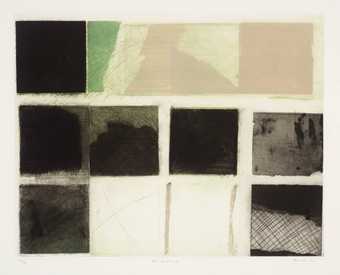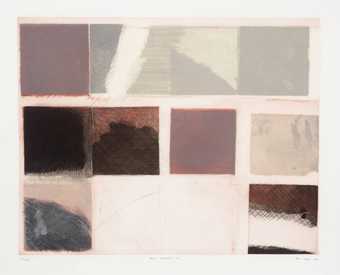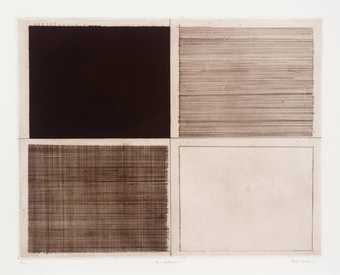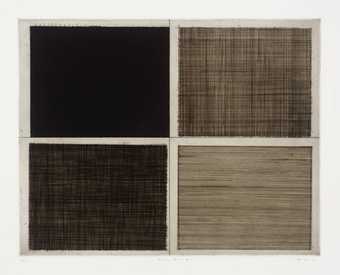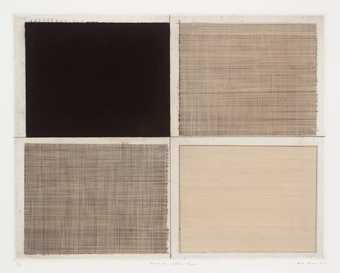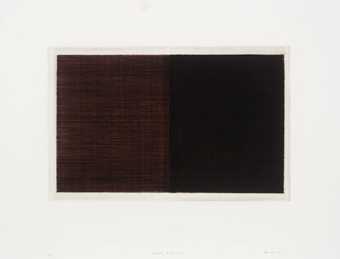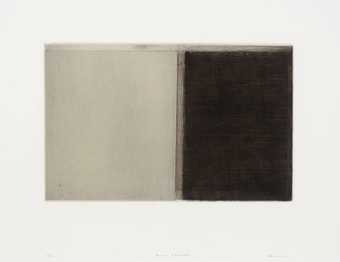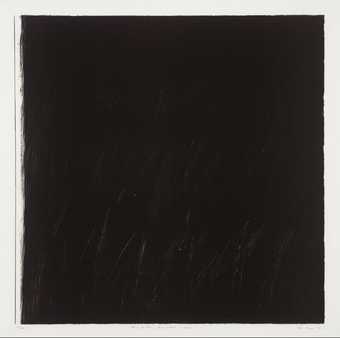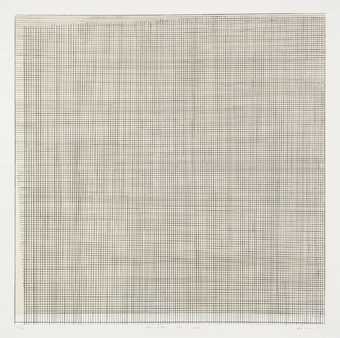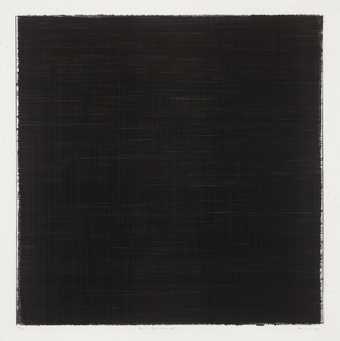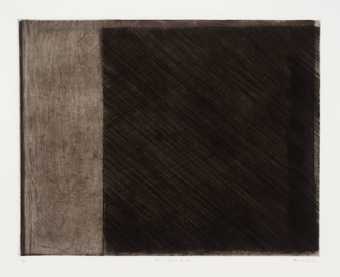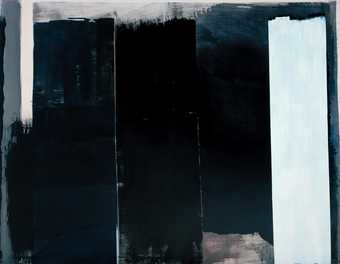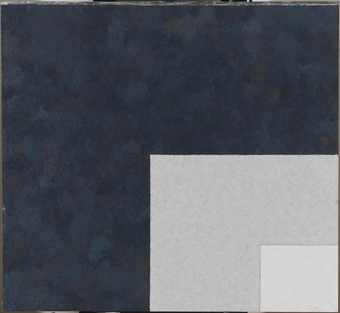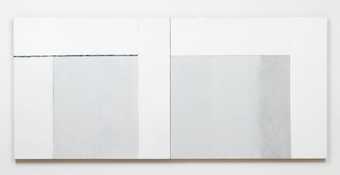
Not on display
- Artist
- Alan Green 1932–2003
- Medium
- Oil paint on canvas
- Dimensions
- Support: 1706 × 5118 mm
- Collection
- Tate
- Acquisition
- Purchased 1982
- Reference
- T03443
Display caption
Gallery label, September 2004
Does this text contain inaccurate information or language that you feel we should improve or change? We would like to hear from you.
Catalogue entry
T03443 One to Four 1982
Oil on canvas, three panels, each 67 1/8 × 67 1/8 (1706 × 1706), overall dimensions 67 1/8 × 201 3/8 (1706 × 5118)
Inscribed ‘ALAN GREEN/1982/ONE TO FOUR/1 OF 3 (LEFT PANEL)/← CENTRE’ on reverse of left canvas, ‘TOP/ALAN GREEN 1982/ONE TO FOUR (2 OF 3)/←(CENTRE PANEL)→’ on reverse of centre canvas and ‘ALAN GREEN 1982/ONE TO FOUR/3 OF 3/(RIGHT PANEL)/CENTRE→’ on reverse of right canvas
Purchased from Juda Rowan Gallery (Grant-in-Aid) 1982
Exh: Alan Green, Recent Paintings and drawings, Juda Rowan Gallery, April–May 1982 (no catalogue, repr. in col. on folded card); Also repr: Alan Green Neue Bilder, Gimpel-Hanover and André Emmerich, Zurich, repr. in col. on folded card but not shown in exhibition beneath a diagram illustrating the main formal divisions in ‘One to Four’
| ONE | 1 | 2 | 3 |
| 4 |
the artist has written (letter to the compiler, 18 May 1986):
At its simplest level this painting is about three squares. One fully occupied, one cut vertically, one cut horizontally. These three activities have different properties which form the subject of the painting:
Panel 1: The fullness of the left hand square; hence the underlying left-right and right-left diagonal structure.
Panel 2: The speed of the vertical cut in the middle panel, although barely visible, echoes the physical vertical divisions of the junctions between the three panels.
Panel 3[4]: The natural slowness of the horizontal division in the right hand panel opposes the previous verticals and ceases to be linear, becoming instead the junction between two opposing colour areas; thus both questioning and reinforcing the existing order created in the two previous panels.
Since the mid-seventies Green has intermittently produced multi-panelled paintings. This triptych - the three panels are joined together - was completed during the first two months of 1982, when he was experimenting with broader and bolder textures, often using a palette knife to score, cross-hatch or flatten his built-up surfaces (the left-hand canvas of T03443 has been diagonally scored in this manner). The major divisions within the composition are: Section One (see Green's diagram above) a deep blue-purple ground cross-hatched as described; section 1 a broad vertical stripe of black-purple and 2 a similar stripe of dark plum colour both of these laid over a crimson ground so that the division between them shows as a narrow strip of crimson; 3 a broad horizontal band of Prussian blue above 4 a crimson area of similar dimensions. This provides a challenge to the compositional balance of the painting which is otherwise quite closely balanced in colour and tone.
In a letter to Alan Bowness (22 July 1982) the artist wrote:
I ... feel it [T03443] was an ambitious painting and reflects one side of my work - the use of disparate areas combined in one large canvas. I have produced about six or seven such paintings in recent years - almost as a foil to the more apparently simple works ...
This entry has been approved by the artist.
Published in:
The Tate Gallery 1982-84: Illustrated Catalogue of Acquisitions, London 1986
Explore
- abstraction(8,615)
-
- non-representational(6,161)
You might like
-
Alan Green Variation A
1974 -
Alan Green Variation B
1974 -
Alan Green Four Rectangles
1975 -
Alan Green Black on Black
1976 -
Alan Green White on Brown
1976 -
Alan Green 1/2 Red Black
1976 -
Alan Green 1/2 to the Right
1976 -
Alan Green 1. Black Vertical on Black
1977 -
Alan Green 2. 90% on White
1977 -
Alan Green 3. Grey on 180°
1977 -
Alan Green Black Diagonal to Edge
1975 -
Alan Green White Diagonal to Edge
1975 -
Alan Green Check
1973 -
Alan Green Broken Blue Angle
1992 -
Alan Green Angled Whites to Blue Grey
1995

